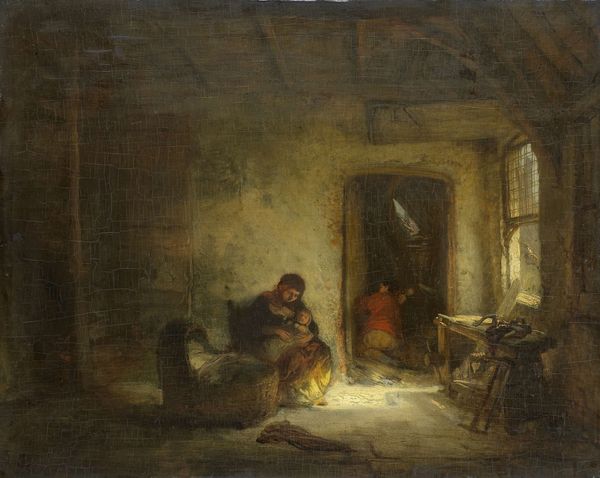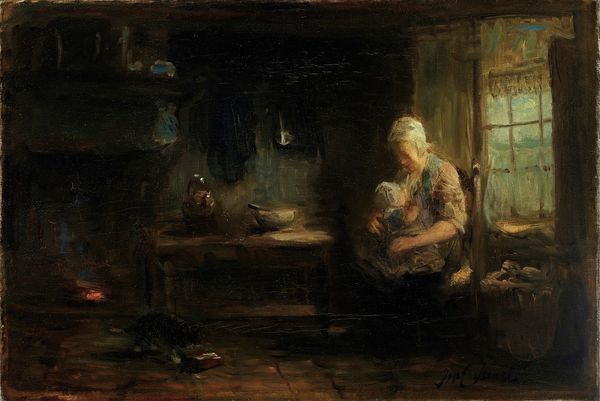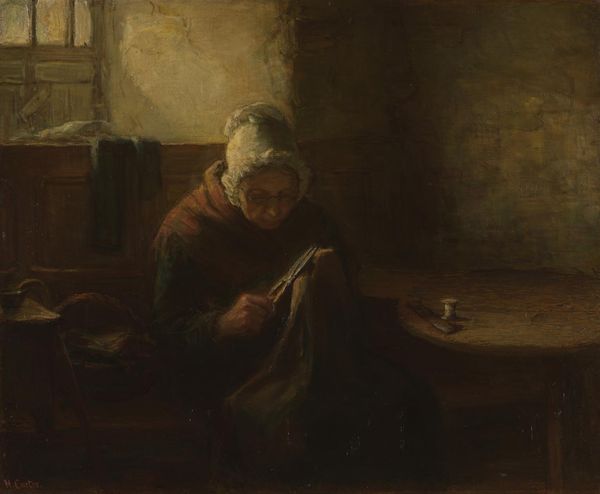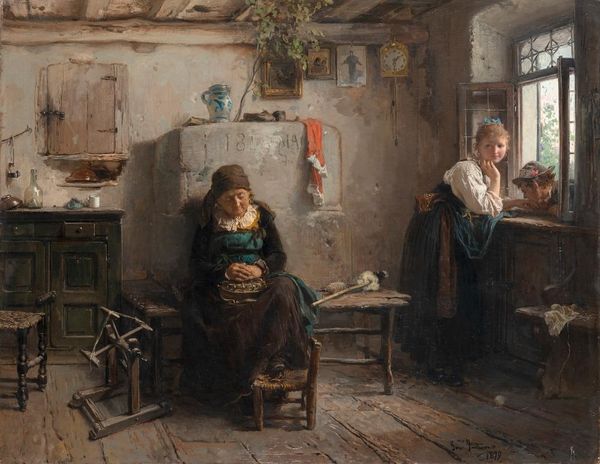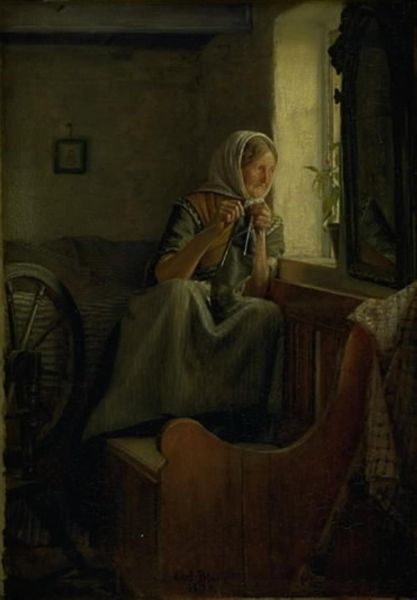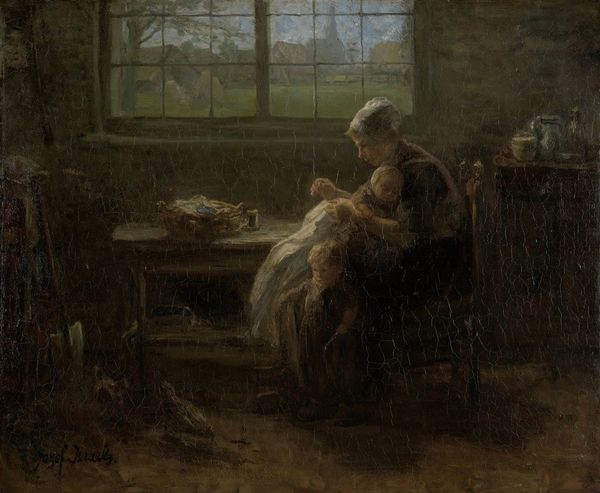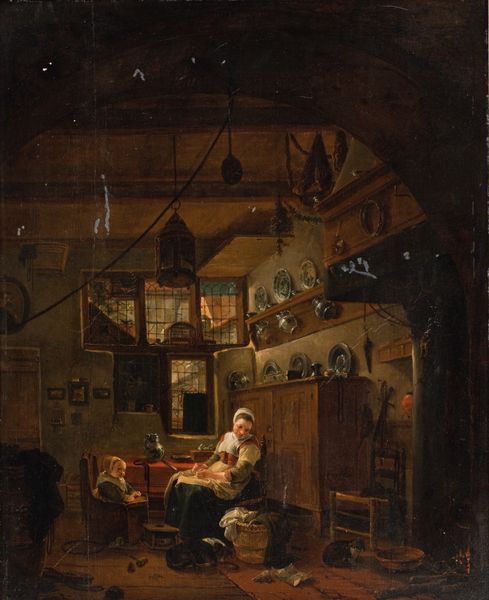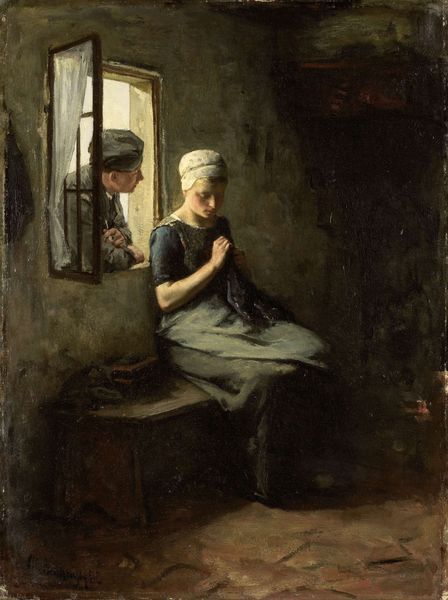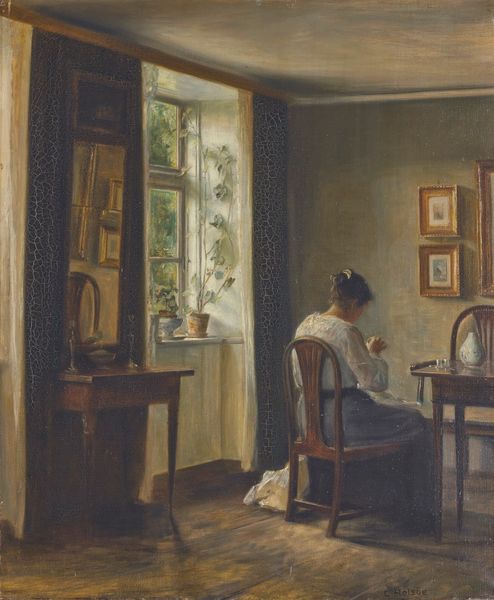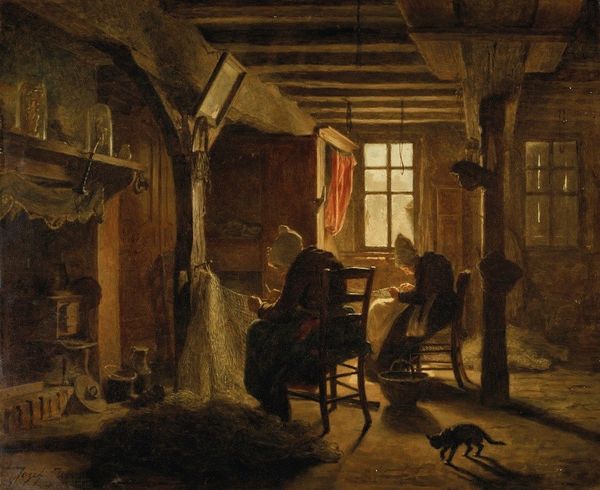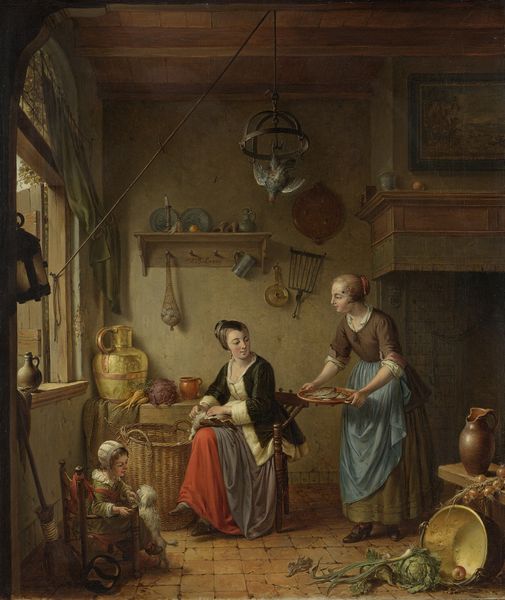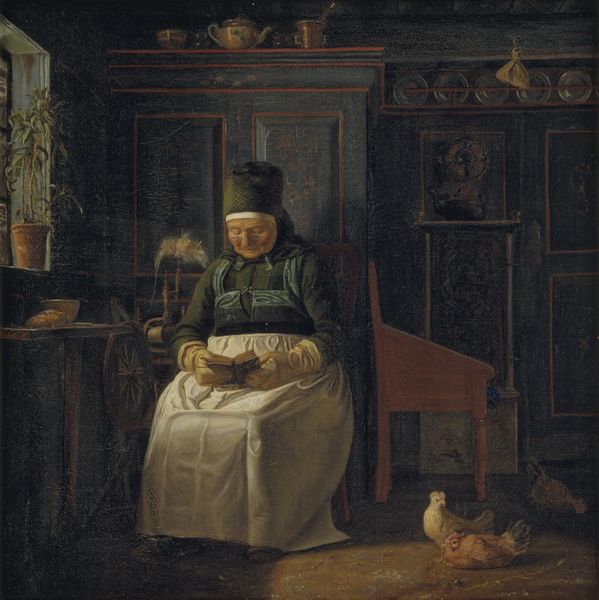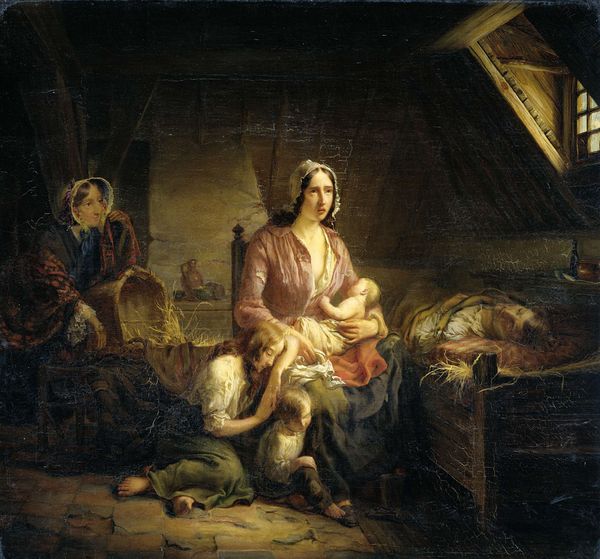
painting, oil-paint
#
portrait
#
mother
#
dutch-golden-age
#
painting
#
oil-paint
#
genre-painting
#
realism
Dimensions: height 56.5 cm, width 49 cm, depth 9 cm
Copyright: Rijks Museum: Open Domain
Curator: Abraham van Strij's genre painting, "The Housewife," believed to have been created sometime between 1800 and 1811, presents a glimpse into the domestic sphere of the Dutch Golden Age. The setting looks intimate yet meticulously arranged. Editor: Intimate is a good word, yes. My first impression is one of contained serenity, if that's even possible. The light falling across the back wall and illuminating the woman almost gives a spiritual weight to her labor. Curator: Consider how van Strij renders the textures, though: the smooth surfaces of the furniture contrasted with the rough, earthy quality of the vegetables she's preparing. Look at the detail in the oil paint! The black and white floor pulls your eyes toward the seated mother figure; it’s not just a backdrop but an integrated element of her material reality. Editor: Absolutely, and beyond the visual textures, consider the structural elements. Notice how the artist divided the plane? Verticals created by furniture versus the horizontal line where shadow falls, creating two different atmospheres. Van Strij manages to imbue a certain calmness through formal balance. It invites contemplative viewing and a harmonious experience, if a touch cool in its precise delineation. Curator: But calmness implies something specific, right? Isn’t he rather depicting the reality of women’s labor during this time period? Look at the baby asleep nearby in what looks like pretty meager housing; note the clear representation of social dynamics. Even in supposedly quiet domestic scenes, markers of labor relations and societal expectations prevail! Van Strij offers material evidence that disrupts idealized portrayals, challenging historical narratives with attention to material existence. Editor: Point taken. Maybe “serenity” was too loaded a word, and yet something remains that goes beyond simple representation. This is an instance where his formal arrangements, his careful arrangement of shadow and form, evoke a deeper and almost abstract emotional response that complicates your strictly sociological reading. There's an essence captured in the relationship between the figures and how they occupy space. Curator: And that essence, for me, circles back to thinking about what painting like this would have meant to both maker and viewer at the time. Genre painting emerged from the demands and markets of bourgeois culture, thus capturing social and economic activity of 19th century Dutch households; its themes served as representations and vehicles of production and reproduction for the same market. Editor: Fair enough. Van Strij's painting contains layers; beyond my initial formalism, the setting’s visuality can then open onto dialogues about structure and society.
Comments
No comments
Be the first to comment and join the conversation on the ultimate creative platform.
